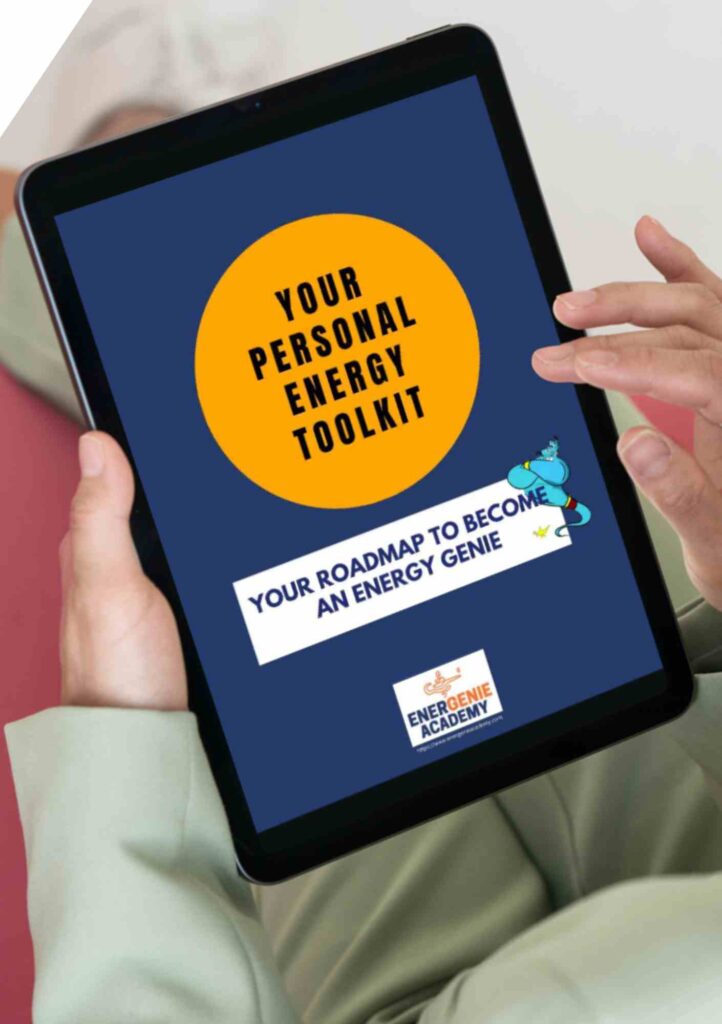Balance your energy to avoid burnout
Do you ever feel like you’re trying to keep a bunch of plates spinning at once? Well, one of the biggest plates to keep steady is your energy level. In other words, you need to balance your energy.

Check out Buddha’s pose — He has got this hand near the chest, reminding us to keep our energy balanced. Our energy’s all over the place during the day, right? Happy moments lift us up, while tough times can bring us down. It’s like being on a rollercoaster!
But here’s the thing: it’s not just about the ups and downs—it’s about how much they swing. If it swings too much, we waste energy and feel off-kilter. The goal? Keep it within a small range and bounce back quick. And that’s where learning the skill of personal energy management helps.
How we balance our energy daily
Let’s dive deeper into this. Picture your day. You wake up feeling refreshed, ready to take on the world—that’s your energy swinging up. But then, you spill your coffee, get stuck in traffic, or have a tough conversation at work. Suddenly, you’re feeling drained and stressed—that’s the swing down in energy levels.
Now, a little swing here and there is normal. It’s part of being human. But when those swings are too extreme and take forever to balance out, that’s when it becomes a problem. Imagine a pendulum swinging wildly, never finding its center. That’s what happens when our energy is all over the place.
How do we keep our energy in balance?
Well, it starts with awareness. Pay attention to how you’re feeling throughout the day. Notice what situations cause your energy to spike or dip. Maybe it’s a certain person, task, or thought pattern that throws you off balance.
Once you’re aware of these triggers, you can start to manage them better. Maybe you take a few deep breaths when you feel yourself getting stressed. Or you take a short walk to clear your head when you’re feeling overwhelmed. It’s about finding what works for you and making it a habit.
Let’s talk about real-life situations where energy balance is crucial. Take being a parent, for instance. It’s one of the most rewarding yet challenging roles out there. You want to be there for your kids, support them, and help them grow. But if you’re constantly in “mom mode,” never taking time for yourself, you’ll eventually burn out.
Finding that balance between being there for your kids and taking care of yourself is key. It’s like the oxygen mask on an airplane—you have to put yours on first before you can help others. So, don’t feel guilty about taking some “me time” every now and then. It’s essential for your well-being and ultimately benefits your family too.
Another area where energy balance is crucial is in helping others. It’s a wonderful thing to lend a hand and support those in need. But if you’re constantly saying yes to every request and spreading yourself too thin, you’ll end up exhausted and resentful.
Learning to set boundaries and prioritize your own needs is essential. It’s okay to say no sometimes, or to ask for help when you need it. Remember, you can’t pour from an empty cup. Taking care of yourself allows you to show up fully for others.
And let’s not forget about our physical bodies—they’re like a mirror reflecting our inner state. Ever notice how your posture changes when you’re feeling confident versus when you’re anxious? Our bodies hold onto stress and tension, affecting our energy levels.
That’s why practices like yoga, meditation, and regular exercise are so important. They help release built-up tension, restore balance, and recharge our energy reserves. Plus, they’re great for overall health and well-being.
But here’s the thing about balance—it’s not a one-and-done deal. It’s a constant process of checking in with yourself, making adjustments, and course-correcting as needed. Some days, you’ll feel like you’ve got it all figured out. Other days, you’ll stumble and fall. And that’s okay.
The key is to keep going, keep striving for that balance, even when it feels like an uphill battle. Because every step you take towards balance brings you closer to a life filled with joy, fulfillment, and inner peace. And isn’t that what we’re all striving for?
So, embrace the journey, my friend. Embrace the highs and the lows, the twists and the turns. And remember, you’re not alone. We’re all in this together, figuring it out as we go. So, let’s keep those plates spinning, one day at a time.

Interested in learning Personal Energy Management?
Grab Your FREE Personal Energy toolkit!
Click HERE to download









